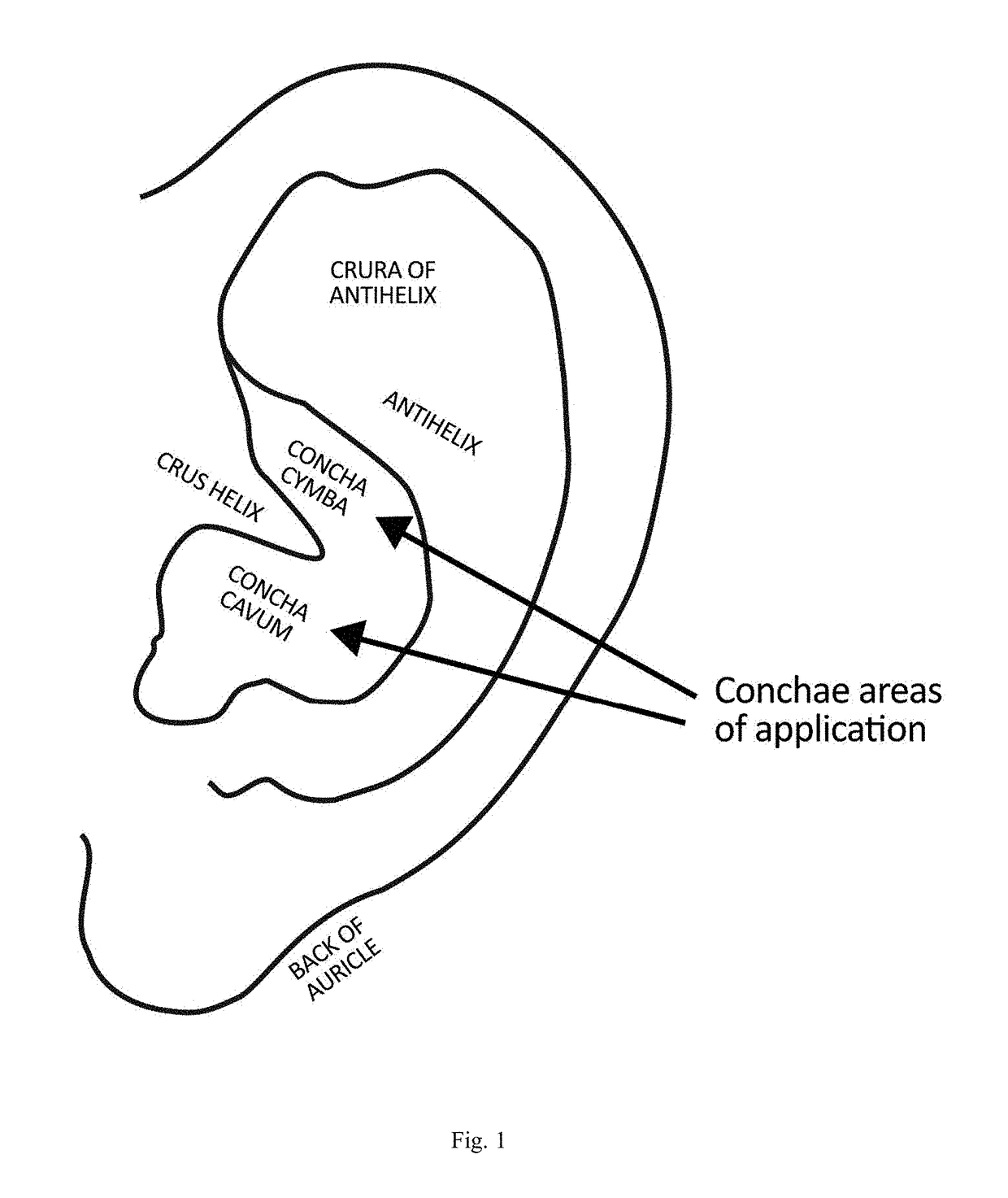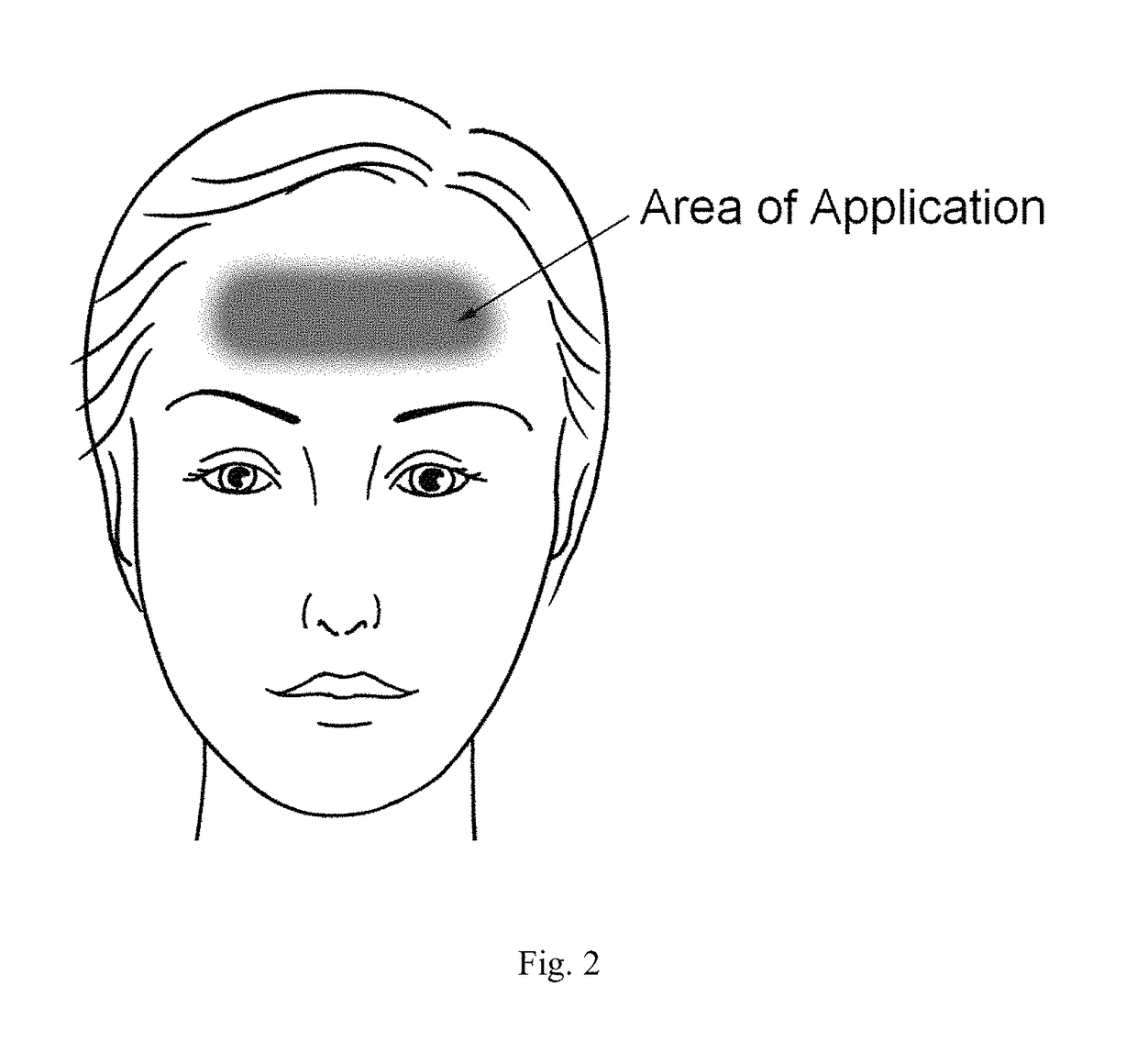Treatment of symptoms related to neurodegenerative disorders through pharmacological dermal activation of cranial nerves
a neurodegenerative disorder and cranial nerve technology, applied in the direction of biocide, muscular disorder, drug composition, etc., can solve the problems of many side effects, no treatment currently solves the tremor or other motor and non-motor symptoms completely or prevents, and severe facial paralysis
- Summary
- Abstract
- Description
- Claims
- Application Information
AI Technical Summary
Benefits of technology
Problems solved by technology
Method used
Image
Examples
example 1
Male Parkinson's Disease Patient
[0072]A 78-year-old male was diagnosed with the early stages of Parkinson's disease in December of 2014. His symptoms included tremors in the hands, impaired short term memory, slow and uncontrolled rigid movements while walking and eating, and declining ocular blink function. The patient also had dry eyes with hyper-tearing, burning, and itching. A CT scan of head was unremarkable at this stage.
[0073]The patient was prescribed oral rasagiline for his Parkinson's disease which he began taking immediately.
[0074]The patient was also treated with progesterone 1% on the forehead initially once daily beginning in March 2015. This relieved his ocular symptoms of burning and itching. The progesterone was applied as needed for about a year.
[0075]His Parkinson's symptoms were stable for nearly one year after which the disease progressed rapidly with the following symptoms worsening significantly: (i) decline in cognitive function, (ii) poor short term memory, ...
example 2
Female Parkinson's disease subject
[0095]A 79-year-old female was diagnosed with Parkinson's disease in August of 2015. Notable symptoms include both resting and action tremor of the left hand and fingers, forearm, and, to a lesser extent, the right hand and the left leg. Handwriting and computer keyboard work were difficult. She had ocular symptoms associated with the disease, including dry eye disease with moderate to severe burning and grittiness, rapid blink rate, and partial blinking. She used artificial tears constantly in an attempt to alleviate the ocular symptoms. She had not been on any Parkinson's medications. Her Parkinson's tremor followed an “on-off” cycle that correlated with her stress levels, the “on” cycle being times with low stress and few symptoms, and the “off” cycle induced by stress showing an increase in symptoms.
[0096]In October 2016, the subject began applying progesterone 1% to her forehead and within the first week her dry eye disease resolved, with no ne...
example 3
Parkinson's Tremor and co-morbid Ocular Graft-versus-host Disease
[0102]A 55-year-old male was diagnosed with Parkinson's disease over 3 years ago, leukemia about 2 years ago, and ocular graft versus host disease resulting from allogeneic stem cell treatment for the leukemia. The patient has been on oral carbidopa-levodopa for at least 2 years.
[0103]He was examined in June 2016 by an ophthalmologist for surface eye disease and was found to have no discernable tear film, filaments and inferior staining along with blepharospasm and blepharitis, and concomitant symptoms of burning and photophobia. The patient started treatment with twice daily progesterone 1% gel applied to the forehead to promote ocular secretion of tear film, and to resolve other symptoms and signs of surface eye disease. After initial treatment, the patient reported immediate relief of photophobia and burning, and tear film secretion was improved. On a follow up visit 5 weeks later, he reported continued relief from ...
PUM
| Property | Measurement | Unit |
|---|---|---|
| time | aaaaa | aaaaa |
| breakup time | aaaaa | aaaaa |
| breakup time | aaaaa | aaaaa |
Abstract
Description
Claims
Application Information
 Login to View More
Login to View More - R&D
- Intellectual Property
- Life Sciences
- Materials
- Tech Scout
- Unparalleled Data Quality
- Higher Quality Content
- 60% Fewer Hallucinations
Browse by: Latest US Patents, China's latest patents, Technical Efficacy Thesaurus, Application Domain, Technology Topic, Popular Technical Reports.
© 2025 PatSnap. All rights reserved.Legal|Privacy policy|Modern Slavery Act Transparency Statement|Sitemap|About US| Contact US: help@patsnap.com


